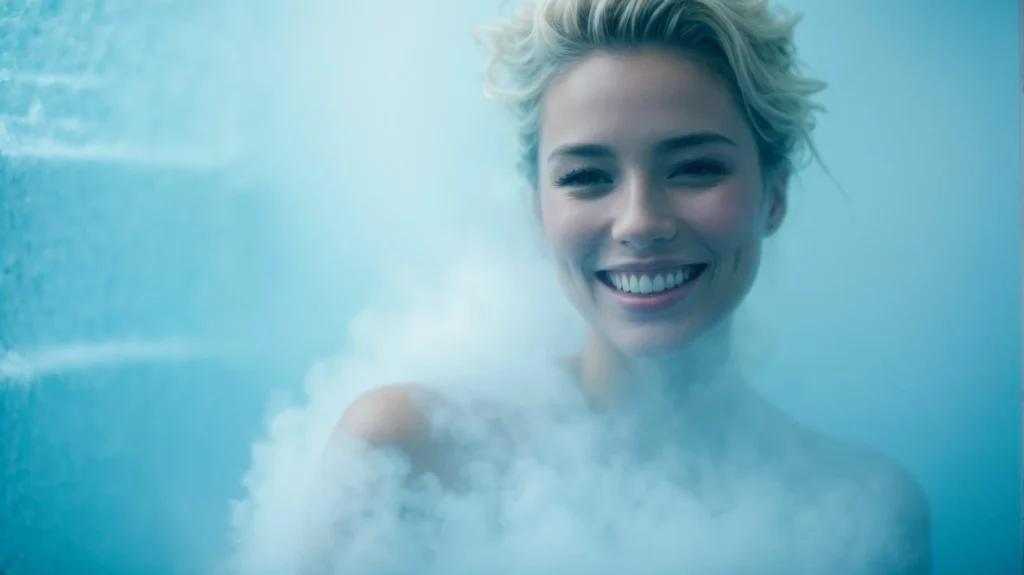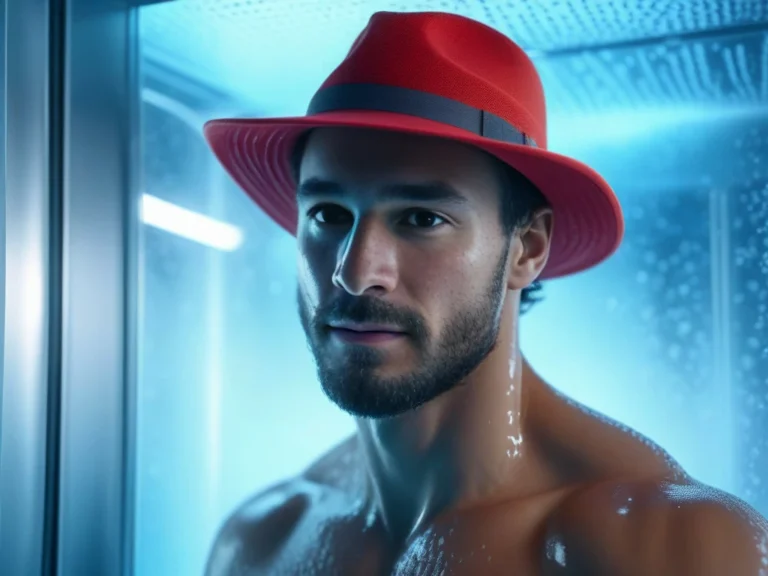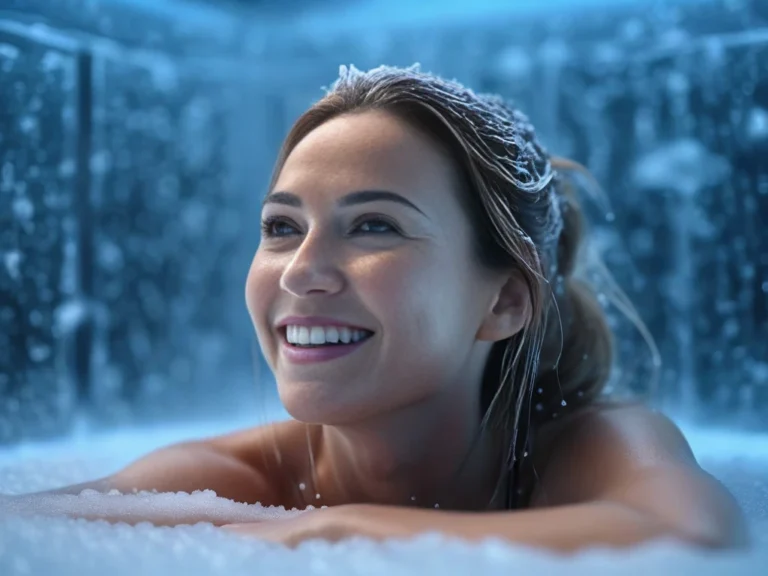Is Cryotherapy Painful?

Cryotherapy is a treatment that involves exposing the body to extremely cold temperatures for a short period, but is cryotherapy painful?
It has gained popularity in the health and wellness industry due to its potential benefits for reducing inflammation, improving circulation, and promoting overall well-being. Many athletes and individuals with chronic pain have turned to cryotherapy as a way to enhance their performance and alleviate discomfort.
In this article, we will explore what cryotherapy is, how it works, its potential benefits, and whether or not it is worth trying.
SUMMARY
- Cryotherapy is a treatment that involves exposing the body to extreme cold temperatures for a short period of time.
- Cryotherapy works by triggering the body’s natural healing response and reducing inflammation.
- The benefits of Cryotherapy include pain relief, improved athletic performance, and reduced symptoms of depression and anxiety.
- Cryotherapy can be uncomfortable, but it is generally not painful.
- Side effects of Cryotherapy may include skin irritation and dizziness, but these are usually mild and temporary.
What is Cryotherapy?
Cryotherapy is a therapeutic technique that involves exposing the body to extremely cold temperatures for a short time. There are different types of cryotherapy, including whole-body cryotherapy and localized cryotherapy.
Whole-body cryotherapy involves standing in a chamber or room that is cooled to temperatures as low as -200 degrees Fahrenheit for a few minutes. Localized cryotherapy, on the other hand, targets specific areas of the body using a device that emits cold air or liquid nitrogen.
How does Cryotherapy work?
Cryotherapy works by triggering the body’s natural response to extreme cold temperatures. When exposed to cold temperatures, the blood vessels constrict, which helps reduce inflammation and swelling. The body also releases endorphins, which are natural painkillers that can help alleviate discomfort.
Additionally, cryotherapy stimulates the production of collagen, which can improve skin elasticity and reduce the appearance of wrinkles.
During a cryotherapy session, you enter a cryotherapy chamber or room where they are exposed to extremely cold temperatures for a short period of time, typically around 2-3 minutes. The temperature is controlled by a machine that uses liquid nitrogen or refrigerated cold air.
You may wear minimal clothing or protective gear to ensure their safety during the session.
What are the benefits of Cryotherapy?
Cryotherapy has been touted for its potential benefits in reducing inflammation, improving circulation, and promoting overall well-being. Some of the potential benefits of cryotherapy include:
- Reduced inflammation: Cryotherapy can help reduce inflammation in the body, which can be beneficial for individuals with conditions such as arthritis or sports injuries.
- Improved circulation: The extreme cold temperatures during cryotherapy cause the blood vessels to constrict and then dilate, which can improve blood flow and circulation.
- Pain relief: Cryotherapy can help alleviate pain by releasing endorphins, which are natural painkillers. This can be particularly beneficial for those with chronic pain or athletes recovering from intense workouts.
- Enhanced athletic performance: Many athletes use cryotherapy as a way to enhance their performance and speed up recovery time. The cold temperatures can help reduce muscle soreness and inflammation, allowing athletes to train harder and recover faster.
- Improved skin health: Cryotherapy stimulates the production of collagen, which can improve skin elasticity and reduce the appearance of wrinkles. It can also help reduce the symptoms of certain skin conditions such as eczema or psoriasis.
Is Cryotherapy painful?
Cryotherapy can be uncomfortable for some individuals, but it is generally not considered painful. The extremely cold temperatures can cause a tingling or numbing sensation on the skin, but this usually subsides after a few minutes.
Some people may experience discomfort during the session, but this is typically temporary and goes away once the session is over.
It is important to note that cryotherapy should be done under the supervision of a trained professional to ensure safety and minimize any potential discomfort.
You should always communicate any discomfort or concerns to the professional conducting the session.
Understanding the sensation of Cryotherapy
During a cryotherapy session, you may experience different sensations due to the extreme cold temperatures. These sensations can include tingling, numbness, or a slight burning sensation on the skin. Some individuals may also feel a rush of energy or a sense of euphoria due to the release of endorphins.
To manage these sensations, it is important to communicate with the professional conducting the session. They can adjust the temperature or duration of the session to ensure your comfort. It is also helpful to focus on deep breathing and relaxation techniques during the session to help manage any discomfort.
Does Cryotherapy cause any side effects?
While cryotherapy is generally safe, there are some potential side effects that you should be aware of. These can include frostbite, skin irritation, or allergic reactions to the cold temperatures. To prevent these side effects, it is important to follow the guidelines provided by the professional conducting the session and to communicate any concerns or discomfort during the session.
It is also important to note that cryotherapy should not be done by individuals with certain medical conditions, such as Raynaud’s disease, cold allergies, or cardiovascular problems. Pregnant women should also avoid cryotherapy due to the potential risks to the fetus.
You might also want to take a look at our FAQ article.
Who should avoid Cryotherapy?
Certain individuals should avoid cryotherapy due to potential risks or complications. These include:
- Pregnant women: Cryotherapy has not been studied extensively in pregnant women, so it is best to err on the side of caution and avoid cryotherapy during pregnancy.
- Individuals with certain medical conditions: Cryotherapy may not be suitable for those with conditions such as Raynaud’s disease, cold allergies, or cardiovascular problems. It is important to consult with a healthcare professional before undergoing cryotherapy if you have any pre-existing medical conditions.
- Children: Cryotherapy is generally not recommended for children under the age of 18 due to their increased sensitivity to extreme cold temperatures.
Preparing for Cryotherapy
Before undergoing a cryotherapy session, there are a few things you can do to prepare:
- Hydrate: It is important to drink plenty of water before and after a cryotherapy session to stay hydrated.
- Avoid caffeine and alcohol: Caffeine and alcohol can constrict blood vessels, which may interfere with the benefits of cryotherapy. It is best to avoid these substances before a session.
- Wear minimal clothing: During a cryotherapy session, it is recommended to wear minimal clothing or protective gear to ensure the cold temperatures can reach the skin.
Is Cryotherapy worth the pain?
In conclusion, cryotherapy is a treatment that involves exposing the body to extremely cold temperatures for a short period of time. It has gained popularity in the health and wellness industry due to its potential benefits for reducing inflammation, improving circulation, and promoting overall well-being.
While cryotherapy can be uncomfortable for some people, it is generally not considered painful. The potential benefits of cryotherapy, such as reduced inflammation and improved athletic performance, may outweigh any temporary discomfort experienced during the session.
However, it is important to note that cryotherapy should be done under the supervision of a trained professional to ensure safety and minimize any potential side effects.
Individuals with certain medical conditions or who are pregnant should avoid cryotherapy due to potential risks or complications. It is also important to communicate any discomfort or concerns during the session to ensure a positive experience.
Overall, whether or not cryotherapy is worth trying depends on your goals and preferences. If you are seeking pain relief or improved athletic performance, cryotherapy may be worth considering. However, it is always best to consult with a healthcare professional before undergoing any new treatment or therapy.
Is There Any Scientific Research on Cryotherapy?
Yes, plenty. CLICK HERE for a vast list of scientific resources related to cryotherapy.






